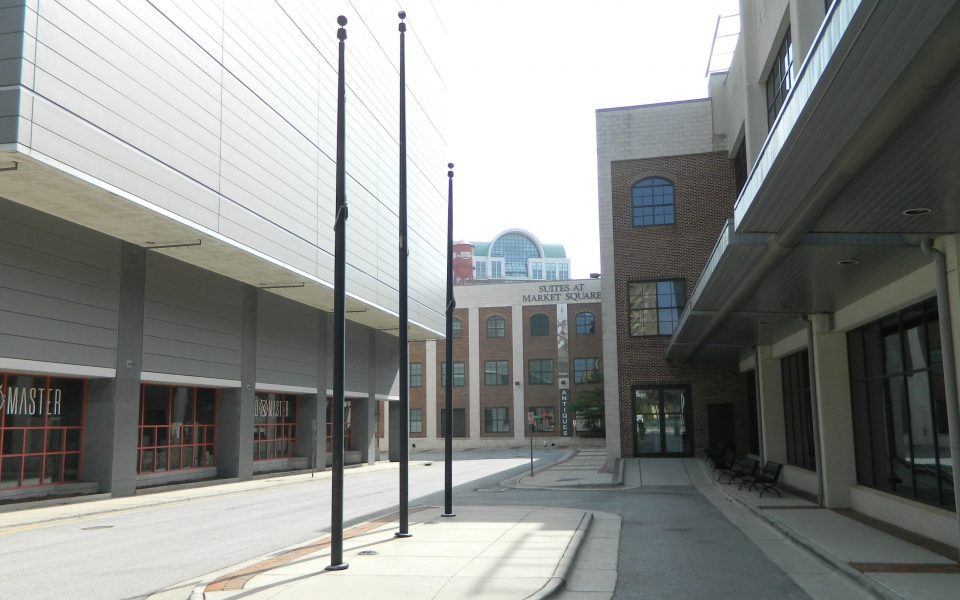by Brian Clarey
1. It’s in three counties.
Nobody saw a problem with the city of High Point expanding through annexation into three different counties — Guilford, Forsyth and Davidson — or if they did, they were overruled. But to us as reporters it means three different tax rates, three different county election board results to tally and three county commissions who have authority in the city. It seems needlessly complicated.
2. The Furniture Market
High Point’s entire raison d’etre is the International Home Furnishings Market, which happens twice a year for two weeks each, replenishing the city’s coffers every time. But the market owns the most expensive real estate in the city, and shuts it all down for the other 48 weeks, giving the population the same status as servants, or those clownfish who eat parasites off of sea anemone.
3. High Point University
Free ice cream, piped-in music, a meal-plan steakhouse and valets for the dormitories are just a few of the amenities provided behind the walled garden of this full-service university.
4. Washington Street
This historic district was like the Harlem of High Point until Kivett Drive cut it off from the rest of the city. There are efforts to revitalize the area — 512 Collective and Jackie’s Place are awesome — but the apathy from the the larger community is staggering.
5. Coltrane’s legacy
Jazz pioneer John Coltrane grew up in the Washington Street neighborhood, and all he got for it was a festival that doesn’t seem to understand his legacy.
6. Street dieting
Last week, we discovered that Kepley’s BBQ restaurant on North Main Street has been collecting signatures against “street dieting,” a move that would slow traffic on their street, increase visibility of their business and create parking in front of their store. “There’s nothing here to walk to,” said cashier Kay Flannery, without a trace of self-awareness.
Join the First Amendment Society, a membership that goes directly to funding TCB‘s newsroom.
We believe that reporting can save the world.
The TCB First Amendment Society recognizes the vital role of a free, unfettered press with a bundling of local experiences designed to build community, and unique engagements with our newsroom that will help you understand, and shape, local journalism’s critical role in uplifting the people in our cities.
All revenue goes directly into the newsroom as reporters’ salaries and freelance commissions.


It’s also in Randolph county for about 3 blocks.
Never knew that about clownfish
Plenty for us here in High Point to work on ……
Unlike Elm Street in Greensboro, Main Street in High Point is a major thoroughfare that cuts entirely through the city. It is the only major street that does this in a commercial corridor. Cutting the lanes down to two will result in a traffic nightmare as many people are passing through. To avoid the traffic, they will use other streets to bypass the two lane corridor. So there will be traffic jams as the four lanes merge down to two and there will also be many who skip it altogether and that will have an adverse impact on the businesses in that area.
I worked at Kepley’s in high school and I have known Kay Flannery and owner Bob Burleson for nearly 30 years. Anyone in High Point will tell you that Bob himself is an institution and few people know more about commercial real estate and High Point itself than Bob.
I’ve also known candidate Roger Sims for 30 years. Everyone who knows Roger likes him. He is a good guy. But on this issue, I have to side with Bob Burleson. I think he’s right about this. People already bypass Main Street using Johnson Street and Hamilton Street to avoid the stop and go traffic. This plan would only make the traffic worse all the way around and would hurt the businesses in that area.
well put spag!
Just completed traffic study found that everything you say about dieting is untrue. While traffic will be slower (by design), the road will handle the same capacity as it does now, and the city will receive the benefits of increased traffic safety, walkability, and bikeability. Recent economic study of the corridor shows that dieting will provide a 2.5:1 return on our investment. Cost to diet around $1 million. The fears expressed in HP are the same as in other cities, and they never ring true. No city has a majority of citizens initially in favor of a road diet, until they see and experience the results.
If it’s such a stupid idea, why does it work in so many other cities? Charlotte dieted East Blvd, a road with the same traffic counts as Main Street, through Dilworth, an area virtually identical to the neighborhoods abutting Main Street, in three phases from 5 lanes to 3 (just like discussed for HP). Today, the road carries 1,000 more cars a day than before the diet, and they have seen a marked increase in walkers and bycylists which has improved the performance of local businesses and resulted in $47 million in new real estate investment. Although there was initially a sizeable lack of support for the diet (nearly everyone) by the third phase, 70% of poll respondents approved of the diet, and other areas of town began requesting that the city diet their streets, too.
OR, we can keep everything the same and watch our property values continue to drop and young, talented entrepreneurs who want to live in an urban setting look elsewhere to live and start businesses.
Your choice.